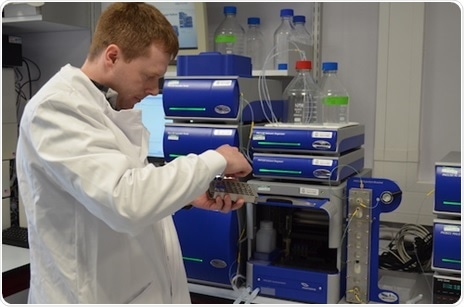The PN3621 Multi-Angle Light Scattering (MALS) detector from Postnova Analytics combines outstanding performance, high precision and reliability design features to facilitate advanced characterization of proteins, conjugates, macromolecules, and nanoparticles.

The PN3621 is commonly used in conjunction with Gel Permeation Chromatography (GPC-MALS), Size Exclusion Chromatography (SEC-MALS) or Field-Flow Fractionation (FFF-MALS) to determine distributions of mass, size and composition independent of column calibration by reference standards.
Designed for many years of reliable, trouble-free operation the customer-friendly PN3621 incorporates a unique vertical ‘clean by design’ flow cell. Unlike MALS instruments with problem prone horizontal flow cells, the vertical cell design 'self-cleans' and also enables large and potentially fragile high molar mass macromolecules to pass through unaltered.
Incorporating the widest range of working angles in a commercially available light scattering detector (7°-164°) the PN3621 MALS ensures unmatched precision in molecular weight and molecular or particle size determination.
Employing 21 angles of light scattering detection enables the PN3621 to achieve better results than any other MALS detector, especially with complex or high molar mass polymers, particles and protein aggregates. Angles below 35° are crucial for precise molar mass and size determination.
For this application the PN3621 MALS offers a complete set of stable and sensitive low angle detectors at 7°, 12°, 20° and 28°. This outstanding low angle light scattering capability, coupled with high sensitivity, results in high data quality in all applications.
The PN3621 comes with highly intuitive, yet powerful software enabling comprehensive analysis of and reporting on light scattering results. The PN3621 is very compact and lightweight saving valuable laboratory space and enabling you to easily transport and use the detector in different locations.